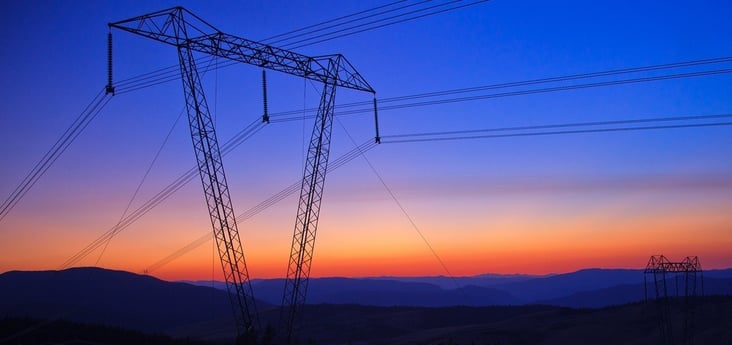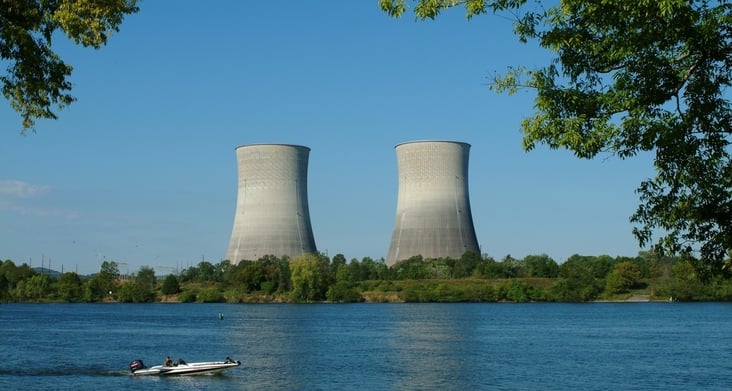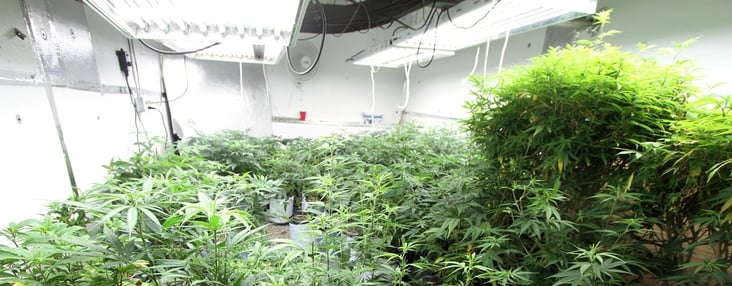
2016 was a big year for advanced energy, and advanced energy was big in 2016. According to our Advanced Energy Now 2016 Market Report, advanced energy represents a $1.4 trillion global industry, with $200 billion of that in the U.S. – and growing! Last week we brought you Part 1 of our Top 10 news stories, with everything from America’s first offshore wind farm to energy storage’s best year ever. Here’s Part 2!

6) Elon Musk Carries Out Master Plan
This year, Elon Musk detailed the second stage of his “Master Plan,” as laid out in his blog post, Master Plan Part Deux. The Master Plan involved four key steps:
- Create “stunning solar roofs” with seamlessly integrated battery storage
- Expand the electric vehicle product line to address all major segments
- Develop a self-driving capability that is 10X safer than manual operation
- Enable your car to make money for you when you aren't using it by providing services to the grid.
By December, he’d achieved or made major inroads on each of those elements. Here’s how it all went down.
To create “stunning solar roofs,” Tesla would need a partner in solar technology. One was close at hand. In August, Tesla Motors announced it had reached a deal to buy SolarCity for $2.6 billion. Next came a 45-day waiting period for other bids to come in. Despite much carping – but to nobody’s surprise – the sale went through, and was approved by shareholders in November.
Meanwhile, the still-separate companies worked on a joint venture to build a marketable solar roof. The technology behind solar shingles was not entirely new, though not extensively commercialized, but with a little of the classic Musk fanfare and obsessive focus on design, SolarCity and Tesla unveiled four styles of solar roof tiles. Musk did the unveiling on the former set of “Desperate Housewives,” because of course he did. These solar tiles, combined with the Tesla Powerwall and an electric vehicle, create a sort of in-home mini-microgrid. In Hawaii, that’s what’s called a “self-supply option,” which is one part of Hawaii’s follow-on to net-metering.
In terms of expanding Tesla’s EV product line to “all major segments,” the company made a major step in that direction in April with the opening of pre-ordering for the Model 3, a Tesla vehicle with a $35,000 base model price. Within 24 hours, the company received more than 100,000 orders, and eventually reached 325,000 in the first week. Of course, there aren’t any Model 3s on the road yet. Production begins in mid-2017.
Finally, Musk also made inroads in driverless vehicle technology, with the Tesla Autopilot system (first featured on Advanced Energy Perspectives late last year). We’ll dive into that more in #7, but it’s safe to say that Musk is well on his way to world domination – or, um, completing his Master Plan and delivering value to shareholders.

7) Advanced Planes, Trains, and Automobiles Dominate Headlines
Driverless vehicles weren’t the only advanced vehicles making headlines this year. Uber launched a fleet of driverless vehicles in Pittsburgh and acquired automated truck company Otto, European development of long-haul trucks without drivers continued, and Tesla’s Autopilot system was made available widely to many drivers (even, in one case, a Tesla driving its “driver” to the hospital after a heart-attack). Meanwhile, EV prices dropped, a solar plane launched on an around-the-world mission, and trains stored energy. Should somebody make a movie about this?
Never mind. This year we followed the flight path of the Solar Impulse 2, the world’s first manned solar plane flight to circumnavigate the globe. After a 10-month stay in Hawaii, the plane, which is powered with panels from AEE Member SunPower, took off in April to continue its journey. From Hawaii it flew to San Francisco, Phoenix, Oklahoma, Ohio, Pennsylvania, and finally New York City, and then on to Seville, Spain, complete its global tour.
Although the solar-powered transportation future is not exactly immanent, we also saw some headlines about solar yachts and solar cars!
Finally, there is a train that stores energy, and not by hauling loads of coal or oil around. Instead, California’s Advanced Rail Energy Storage (ARES) train is full of rocks. It stores potential energy by… being a heavy train on top of a hill, and releases it by running downhill. It’s a dry equivalent of pumped hydro energy storage, and can be counted on to run ontime. The energy train is still in what we might call “Model 3-stage” – ARES expects to begin construction next year on a 50 MW test site next year. All aboard!

8) Waking the Sleeping Giant of Nuclear Power
For decades, nuclear power has been quietly producing about 20% of the electricity used in the United States. But until recently, construction on new nuclear power plants had halted. That finally changed in 2016. So did policy initiatives to keep some aging nukes in operation, at least until they can be replaced by similarly zero-emitting renewable energy.
The Tennessee Valley Authority completed the final tests on Watts Bar 2 in August and it came online not long after. Construction on unit 2 actually began in 1973, but the project stalled out a few times for both safety and economic concerns. In the end, it was worth the wait. The reactor features the FLEX system, a state-of-the-art safety feature produced in response to a Fukushima task force put together by the Nuclear Regulatory Commission.
Additionally, TVA got permits this year to install small nuclear reactors (SMR) on another site originally slated for a much larger nuclear facility, and NuScale Power, an SMR company based in Oregon, is developing a site on the grounds of the Idaho National Laboratory and the Los Alamos National Laboratory is considering whether or not to follow suit.
In the closing days of 2016, there was a flurry of activity around nuclear power. Duke Energy won a license to site a nuclear power plant in South Carolina, and just this week, Senators Lamar Alexander and Sheldon Whitehouse published an opinion piece in the New York Times on the importance of maintaining nuclear power for the United States.
That goal is being accomplished, however controversially, in New York and Illinois. Gov. Cuomo’s Clean Energy Standard will drive New York to 50% renewable energy by 2030, but until then, will provide credits to older nuclear power plants upstate. Similarly, in Illinois, a new law will keep certain Exelon nuclear power stations in operation in the short term as part of a deal that grows renewable energy in the long term. It’s all advanced energy – old and new, working together.

9) Pot Power Gets Mellow
We’ve been following the energy angle of legalized marijuana – whether medical or recreational – for a couple of years now. Legal growth operations draw major amounts of electricity from the grid, but utilities, which in many cases are governed by federal regulation, have their hands tied when it comes to helping growers become more efficient. Kind of funny, but it’s no joke: Legal grow operations are rivaling data centers in energy use. Current indoor growth operations might represent as much as 1% of total U.S. electricity demand. Luckily, marijuana farmers are aware of the cost of electricity, and are beginning to get more efficient on their own.
More and more growers are using high-efficiency LED lighting, in some cases cutting energy costs passed on to consumers in half. According to Utility Dive, large commercial grow operations can have power bills that run between $50,000 and $100,000 per month. LEDs can cut that cost significantly.
Making pot-growing more efficient isn’t the only thing LED lights can do. In a news release from New York Independent System Operator, sent out both this year and last, holiday lighting increases electricity use about 4% between Thanksgiving and the New Year. But LED lights, which have increasingly displaced the traditional variety of blinking red, green, and white strings, have reduced the seasonal bump in electricity demand in the Empire State from 1,150 MW to between 800 MW and 900 MW. Happy – and energy efficient – holidays!

10) The Future of Energy is Now!
This year, we saw stories that, in years past, would have been the stuff of science fiction rather than news. Blockchain technology developed for Bitcoin bringing in a new era of energy sharing to utilities investing in virtual power plants and integrated distributed energy resources. Connected homes and data-managed buildings that lower electricity bills for consumers large and small. Science fiction? No – energy fact!
All in all, it’s an exciting time to be in advanced energy. What will 2017 bring? We can’t wait to find out.
Keep up-to-date in 2017 by subscribing to our weekly newsletter, free at the link below!
